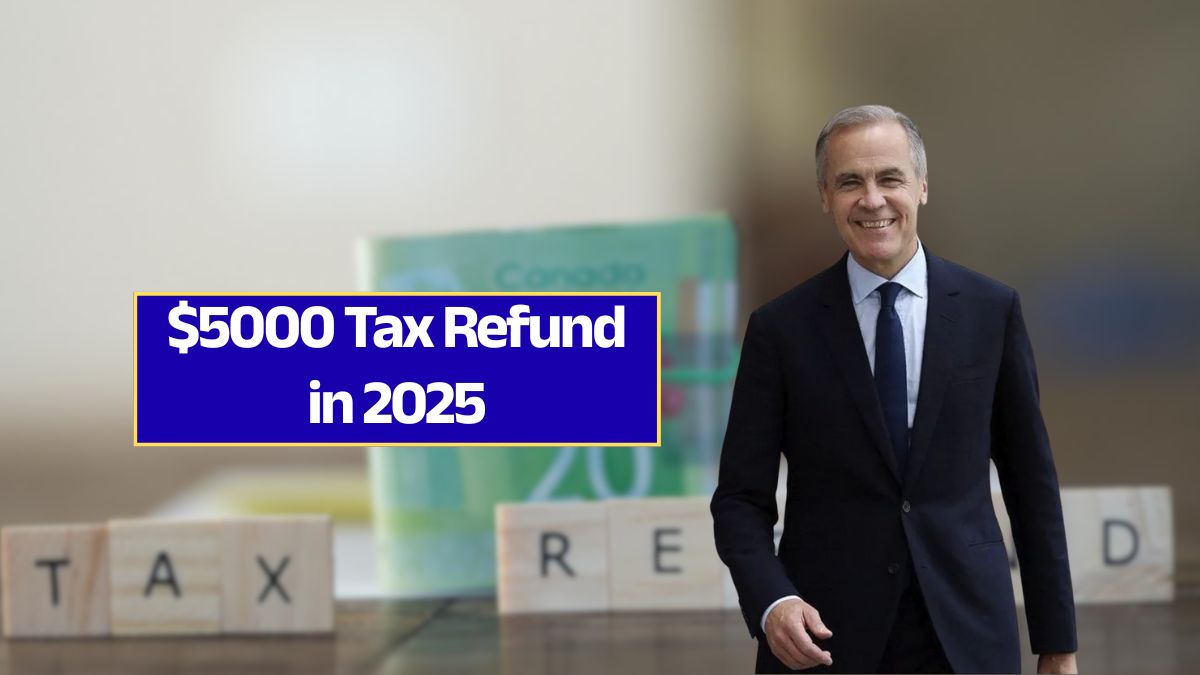Across Canada, households are buzzing about a possible $5000 CRA tax refund expected in September 2025. For many families, seniors, and low-income workers, the idea of such a payment offers hope amid rising grocery bills, housing pressures, and ongoing inflation. Yet despite the anticipation, no official confirmation has come from the Canada Revenue Agency (CRA), leaving many to wonder whether the refund is fact, fiction, or simply a misunderstood extension of existing tax credits.
This in-depth report unpacks the details behind the rumour, reviews who might qualify if such a payment were introduced, and explains how the CRA actually manages tax refunds
The $5000 Refund at a Glance
If the payment were to be issued, it would work like this:
- Payment Amount: $5000 maximum, based on eligibility.
- Administered By: Canada Revenue Agency (CRA).
- Payment Method: Direct deposit via “Canada PRO Deposit” or mailed cheque.
- Expected Timeline: September 2025 (exact date unconfirmed).
- Eligibility Factors: Filing status, income level, tax credits claimed, and residency.
But here’s the catch: so far, the CRA has not confirmed any such one-time payout. The only reliable refunds Canadians are guaranteed are those already tied to their 2024 tax filings, credits like the Canada Workers Benefit, and standard refundable credits.
Who Might Qualify If the Refund Were Real?
Speculation suggests eligibility would closely follow current refund and credit rules. Canadians could qualify if they:
- Filed their 2024 income tax return on time with accurate information.
- Had taxes deducted at source from employment, pensions, or benefit income.
- Claimed eligible credits such as disability tax credits, tuition credits, or the Canada Workers Benefit (CWB).
- Maintained Canadian residency throughout 2024.
- Were in good standing with CRA, with no history of false claims or compliance issues.
In practice, these are the same conditions that apply to all tax refunds, which is why experts caution against treating the \$5,000 rumour as official policy.
Seniors and the $5000 Refund Claim
The rumour gained traction in senior communities because of genuine financial need. With over 7 million Canadians aged 65 and older relying primarily on CPP, OAS, and GIS, even modest relief payments can make a difference.
For seniors:
- Refunds would be issued automatically if taxes were filed.
- CRA’s My Account portal provides tracking and deposit updates.
- Direct deposit remains the fastest way to receive refunds.
Still, the CRA has not announced any special one-time refund program for seniors beyond the existing pension-related tax benefits.
Why Refunds May Be Withheld
Even if a taxpayer is eligible for refunds, CRA has the authority to reduce or withhold amounts. Common reasons include:
- Unpaid Employment Insurance (EI) overpayments.
- Outstanding immigration loans owed to the federal government.
- Delinquent GST/HST returns for business owners or sole proprietors.
- Family support garnishments ordered by provincial enforcement agencies.
- Refunds under $2, which the CRA does not automatically issue.
This means that even if a one-time $5000 refund existed, not every Canadian would receive the full amount.
How to Apply for a CRA Refund
Canadians do not apply for refunds separately—refunds flow naturally from filing an income tax return. Still, here’s the standard process to claim all entitlements:
- File your 2024 tax return by the annual deadline.
- Log into your CRA My Account using your SIN and verified credentials.
- Ensure banking and personal details are accurate for direct deposit.
- Track your refund status under “Payments & Refunds.”
- If adjustments are required, CRA may request proof of income, receipts, or slips.
Those without online access can file by paper or use authorized tax preparers.
What the CRA Has Actually Said
While many blogs and social media posts reference a September 2025 payout, the CRA has only confirmed the following:
- Regular tax refunds will continue, based on 2024 returns.
- Credits and benefits such as GST/HST, Climate Action Incentive, and CWB remain active.
- No official $5,000 one-time refund has been announced.
Officials urge Canadians to be cautious, emphasizing that CRA communications will always appear on Canada.ca or in secure CRA portals—not on unverified news sites or chain messages.
Why the Rumour Spread
The $5,000 figure has roots in:
- Confusion with past programs like the pandemic-era CERB and one-time GST top-ups.
- Mix-ups with provincial benefits, such as Ontario’s Trillium Benefit or rent rebates.
- Misleading headlines designed for clicks, which sometimes exaggerate refund numbers.
These factors created fertile ground for the rumour, particularly during a year when Canadians face record inflation and are desperate for financial relief.
How to Protect Yourself From Misinformation
Scammers often exploit benefit rumours to trick people into sharing sensitive details. Canadians should:
- Verify all updates at Canada.ca.
- Use CRA My Account to check benefit status.
- Never click suspicious links promising early access to refunds.
- Avoid sharing Social Insurance Numbers (SINs) over email or phone.
If contacted unexpectedly, always confirm the message through CRA’s official channels.
The Bigger Picture: Demand for Relief is Real
While the \$5,000 refund rumour is unfounded, it reflects a very real reality: Canadians are struggling. Calls are growing for more targeted support for seniors, families with children, and low-income earners. Whether through expanded credits, increased OAS, or special one-time payments, pressure is on Ottawa to deliver.
FAQs
Q1. Will Canadians receive a $5000 CRA refund in September 2025?
No. There is no official announcement from CRA confirming a $5000 one-time refund.
Q2. Who normally qualifies for CRA refunds?
Canadians who file accurate tax returns, pay taxes during the year, and claim eligible credits.
Q3. When will refunds or credits be issued in September 2025?
Refunds are processed year-round based on tax returns. Credits such as GST/HST are scheduled quarterly, with the next due October 3, 2025.
Q4. Can CRA withhold or reduce my refund?
Yes, for unpaid debts like EI overpayments, immigration loans, or family support garnishments.
Q5. How do I check if I’m entitled to a refund?
Log into CRA My Account online, call CRA directly, or review your Notice of Assessment after filing.








